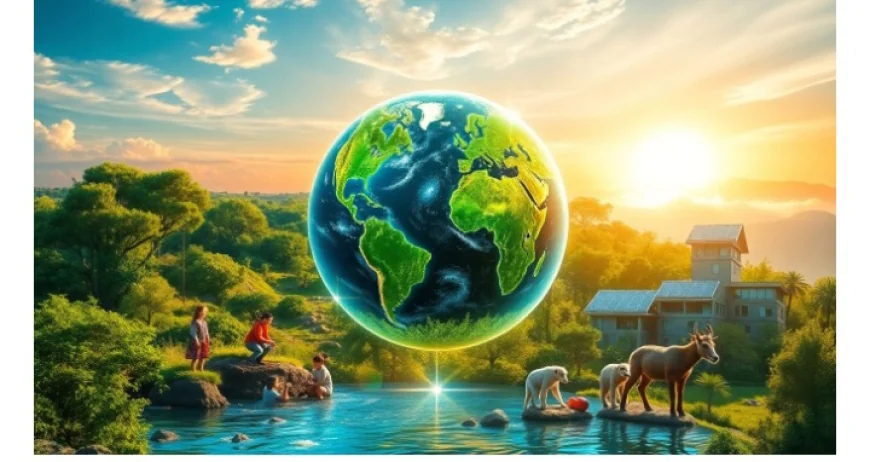Storytelling for the Planet: Turning Eco Facts into Emotions
Every day, the planet faces serious threats—climate change, dying forests, polluted waters. Yet, simple facts often get lost in a flood of data. That's where storytelling shines. Stories have the power to turn dry numbers into feelings that stick. When people care deeply, they’re more likely to act. Using storytelling techniques helps create real emotional bonds between communities and the environment, inspiring change that lasts.


Storytelling for the Planet: Turning Eco Facts into Emotions
Introduction
Every day, the planet faces serious threats—climate change, dying forests, polluted waters. Yet, simple facts often get lost in a flood of data. That's where storytelling shines. Stories have the power to turn dry numbers into feelings that stick. When people care deeply, they’re more likely to act. Using storytelling techniques helps create real emotional bonds between communities and the environment, inspiring change that lasts.
The Power of Storytelling in Environmental Communication
Why Stories Are More Memorable Than Facts
Scientists have shown that stories are easier to remember than plain facts. Think about advertising or charity campaigns—you often remember the person’s story, not just their statistics. For example, campaigns like “Save the Elephants” turn numbers about poaching into tales of these majestic animals. These stories stay with us longer, making the message more powerful.
Emotional Engagement as a Catalyst for Action
Humans are wired to react emotionally. When we feel hope, fear, or pride, we're motivated to do something. Research shows stories that evoke feelings can push people from awareness to action. A photo of a dying coral reef or a story about a village losing its land can inspire viewers to donate, plant trees, or vote differently.
Building Connection and Empathy
Stories create emotional bridges. They help us see from someone else's perspective. For example, a story of an indigenous community fighting to save their forest personalizes the problem. It’s no longer just an environmental issue; it becomes a human story. These narratives build empathy, making people care deeply about the issues.
Crafting Compelling Environmental Stories
Identifying Core Eco Facts and Data
Start with the facts. Pick impactful statistics—like how much forest is lost each year or the rise in carbon emissions. But don’t drown your audience in numbers. Instead, choose the most meaningful facts and weave them into your story naturally. For example, “Every minute, a forest the size of a football field disappears,” ties big data to a visual image.
Creating a Narrative Arc
Stories need a clear beginning, middle, and end. Popular structures like the hero’s journey or problem-solution flow help. Think of a conservation story: a local hero spots the forest’s destruction, learns about its effects, and works to save it. Giving the story a relatable character makes it easier for audiences to connect.
Using Personal Stories and Case Studies
People connect with real-life tales. Share stories from communities affected by rising sea levels or grassroots efforts to plant trees. They add authenticity and emotion. For example, a story about a farmer who lost his crops to drought can create a powerful emotional impact.
Incorporating Vivid Imagery and Descriptive Language
Paint pictures with words. Use sensory details to make eco issues real. Describe how a dried-up river looks or the smell of smoke after a forest fire. These details make the story vivid, evoking feelings of loss, hope, or urgency.
Leveraging Emotional Triggers to Inspire Action
Identifying Key Emotional Drivers
Different stories evoke different feelings: hope, fear, pride, guilt, or compassion. Hope encourages action; fear warns of danger; pride builds ownership. Knowing your audience helps decide which triggers to use. For kids, stories about empowerment and hope work best. For adults, highlighting guilt or pride may push them to act.
Connecting Facts to Personal Impact
Turn stats into personal stories. Instead of saying, “Carbon emissions are up 50%,” say, “This pollution affects children’s lungs and small farmers’ crops.” When numbers link to real lives, feelings grow. People see that climate change isn’t just a statistic but something that touches them directly.
Creating a Sense of Urgency and Hope
Balance alarming facts with solutions. Show how small actions add up—like reforestation, recycling, or clean energy. Sharing success stories gives hope. For instance, stories of forests regrowing after replanting efforts remind us change is possible.
Practical Strategies for Storytelling in Eco Campaigns
Choosing the Right Medium
Different messages work better on different platforms. Short stories do well on social media; documentaries show the bigger picture. Blogs and community events can tell in-depth tales. Tailor your story to fit the platform and audience.
Collaborating with Local Communities and Experts
Partner with those who know the issues firsthand. Indigenous groups, scientists, and activists can share authentic stories. This builds trust and credibility. Their voices make your message more real and relatable.
Engaging Audiences through Interactive and Visual Content
Use maps, videos, and infographics to make stories richer. Interactive tools, like virtual tours or quizzes, pull viewers in. Encourage your audience to share their own stories—user-generated content creates a stronger community feeling.
Measuring Impact and Refining Stories
Track what works. Are people engaging or sharing your stories? Use feedback to sharpen your approach. If certain stories prompt action, do more like them. Always look for ways to make your storytelling more emotional and impactful.
Conclusion
Turning facts into stories fuels the drive for a better planet. When eco messages hit home emotionally, they create lasting change. Storytelling is a simple but powerful tool for building awareness, sparking empathy, and inspiring action. As environmental advocates, we must craft authentic, emotional narratives. When we do, we give others the spark to care—and to act.



 VARSHITHA
VARSHITHA